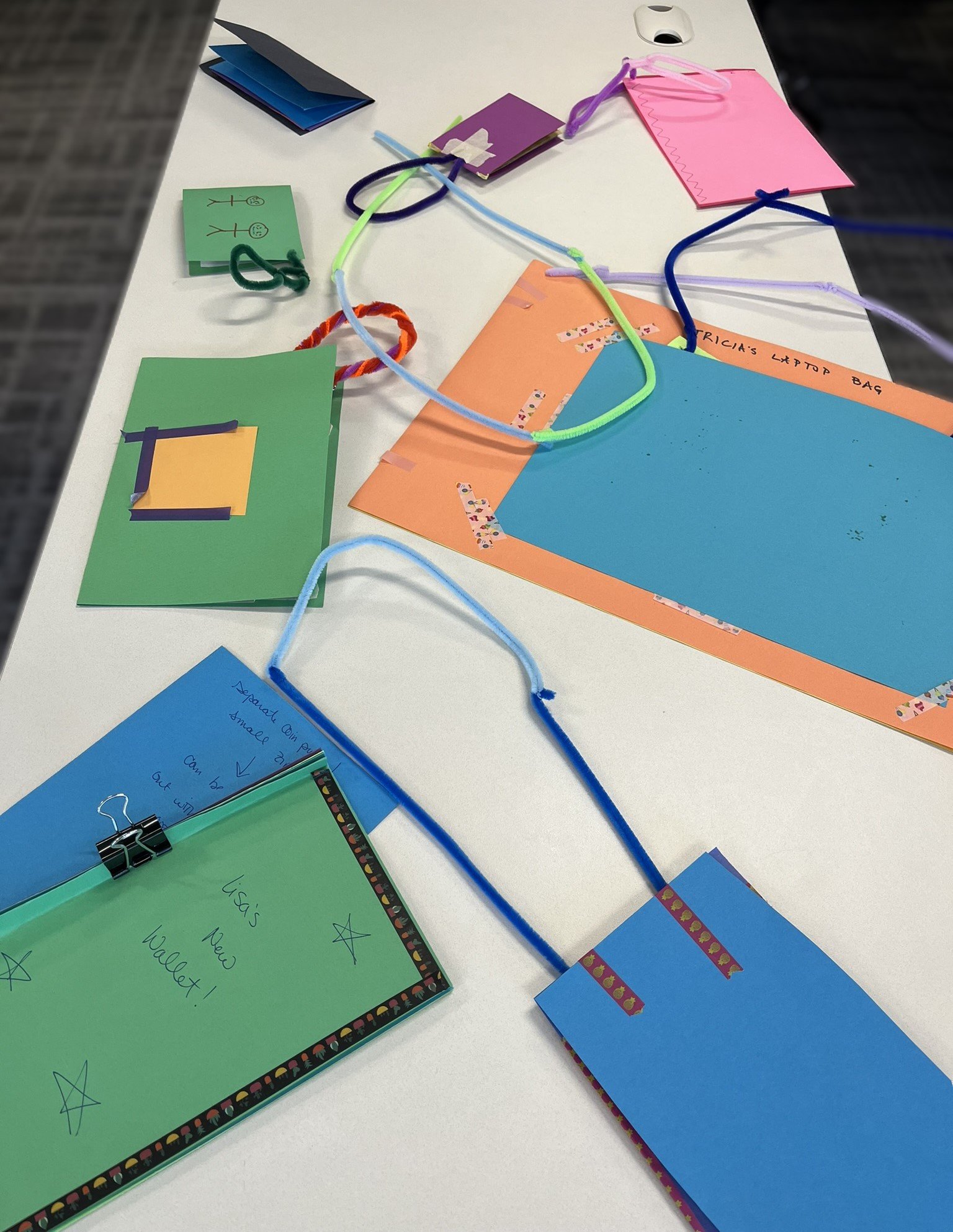Bring your ideas to life through prototyping
Ever felt like your "new" solutions are just slightly modified versions of existing ones?
Tired of trying to explain what you think is a bold new idea, only to see blank stares from your teammates?
Recently launched a product or service you were super excited about, that flopped in the marketplace?
Me too. I used to think a good PowerPoint presentation was the way to convince my audience of any new idea I was trying to introduce. Plus, I had this great stable of old slides, might as well just tweak those tried-and-true words!
Then, I discovered prototyping. Next time you want to redesign something or “pitch” an idea, give this hands-on approach a try. You’ll be amazed how much more powerful pipecleaners and washi tape are than that tired old slide deck.
Why prototyping?
Prototyping allows you to build something tangible that invites real interaction. Translating a concept into a model the audience can touch provides much richer feedback on your idea's desirability and feasibility than any verbal explanation could. The point is to test your assumptions (rather than convince your customers they need what you're offering), which frees you up to get more creative than you might let yourself be with a formal, complete solution.
Rapid prototyping is a particular method of experimenting (see prior post) that starts with a large number of ideas you turn into “cheap and scrappy” physical models. This method lets you gather feedback from your customers—whether external or internal—on what they like or dislike before you invest in a more robust, fully-baked solution. As you learn more about how the customer will interact with your product or service, and what features they really like, you can progress from rough “pretend-o-types” (think duct tape and coat hangers) to a more realistic, fully-formed product.
The wallet prototypes met each customer’s needs so well, they wished they were real!
Playing unlocks creativity
Even prototyping something you don’t intend to sell can spark creativity and jolt you out of an innovation rut. On a recent redesign project, participants learned about prototyping by building wallets for a partner on the project team. Inspired by an exercise from Stanford University’s “d.school”,[1] team members gathered feedback from their partner as they iterated on their wallet designs. The "customers" loved them so much they wished they were real! These wallets couldn’t be found anywhere on Amazon – the designers had done such a good job addressing unique user needs that they’d created products that were truly novel.
This whimsical exercise proves that there is always more room for innovation. Don’t talk yourself out of trying because you think everything's already been done!
From sketches to reality
The wallet exercise (which only took about 90 minutes) set the stage for a rapid prototyping workshop series to improve the client’s employee onboarding program. They started with numerous hand-drawn sketches shared with internal "customers" (recent new-hires) in one-on-one interviews. Next, they created virtual prototypes—mocked-up experiences on whiteboards—presented during a walk-around "protoype fair" for more feedback. Finally, they developed a "minimum viable prototype" (MVP) in just a week, trialing these new ideas in a real employee onboarding class.[2]
This scrappy, quick approach helped the team gather valuable data on whether each idea was worth exploring further. The insights from the MVP helped them craft the minimum "awesome" product that they’ll bring to life at another employee onboarding next week. Instead of spending months designing, building, and implementing a perfect solution, they spent just two months iterating based on (internal) customer feedback, delivering benefits to new hires more quickly and cost-effectively than the traditional “project” approach. Now, they have high confidence that this solution will work and includes only what is necessary.
PowerPoint isn’t going to cut it
Prototyping has several key advantages over verbal explanations or the “waterfall” project approach (which involves a whole lot of time and effort before anything reaches the customer).
Sparks Creativity: Building tangible models encourages out-of-the-box thinking.
Cost-Effective: Prevents wasted investment on over-developed versions of unwanted solutions.
Builds Buy-In: Engages stakeholders throughout the development process, reducing the need for extensive marketing or change management later on.
So get out from behind your desk, and put something in front of your actual customer. You’ll not only start learning faster, but might just enjoy the process.
Need a hand?
If prototyping feels daunting or unfamiliar, don’t go it alone! Growing Wild can help you frame your prototyping objectives and process, teach key design thinking principles, facilitate workshops internally and with customers, and extract valuable learnings to help you deliver a product or experience that will wow your customers. Contact us to learn more.
[1] Thanks to Sonia Vaughan for introducing me to this training many years ago while we were working together at REI.
[2] See The Innovator’s Method: Bringing the Lean Startup into Your Organization, by Nathan Furr and Jeff Dyer, to learn more about the stages of prototyping.
